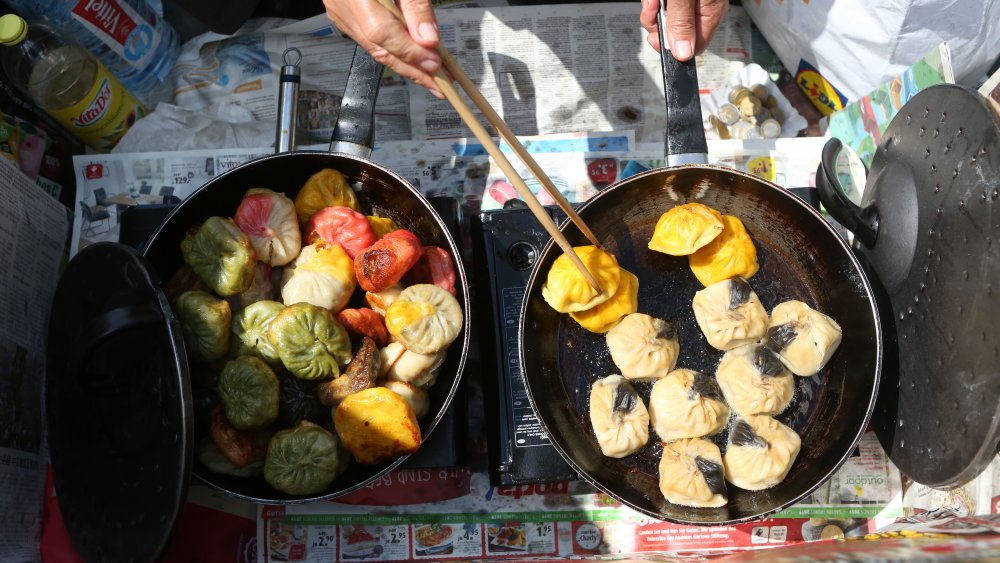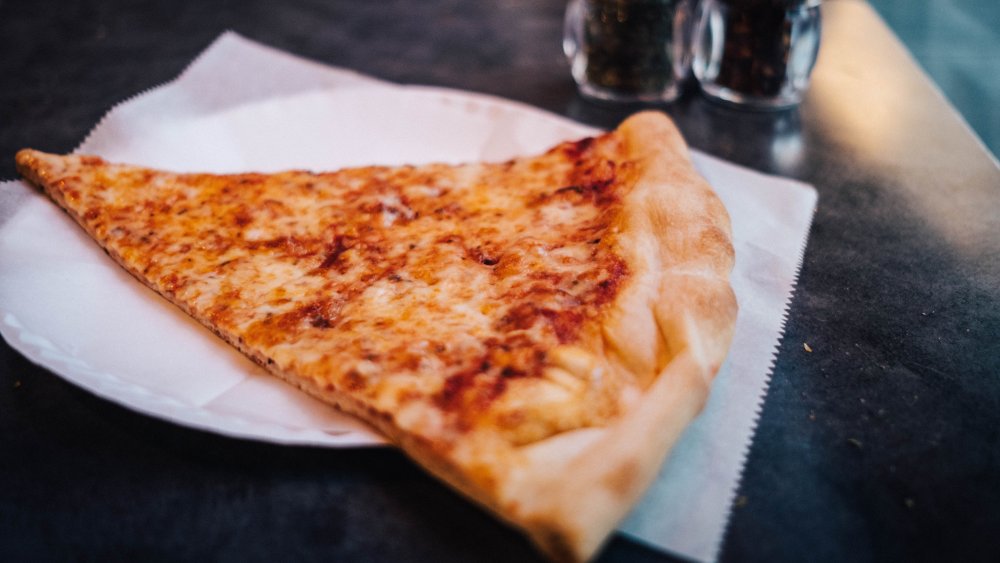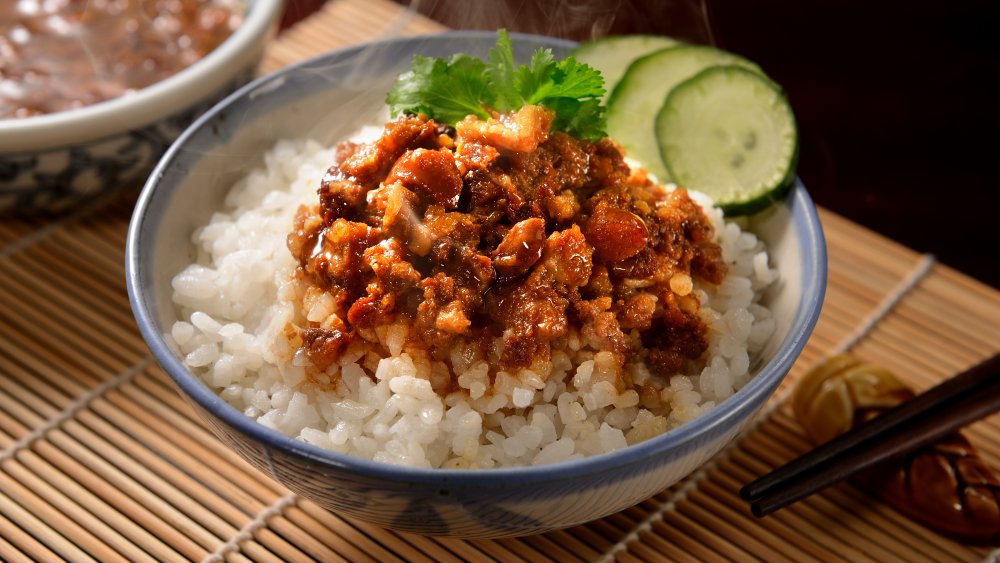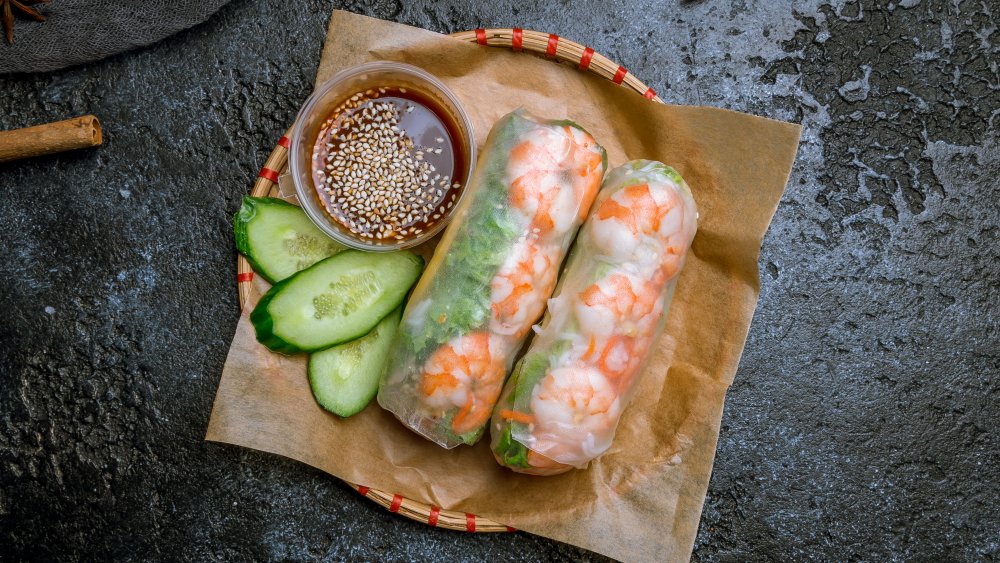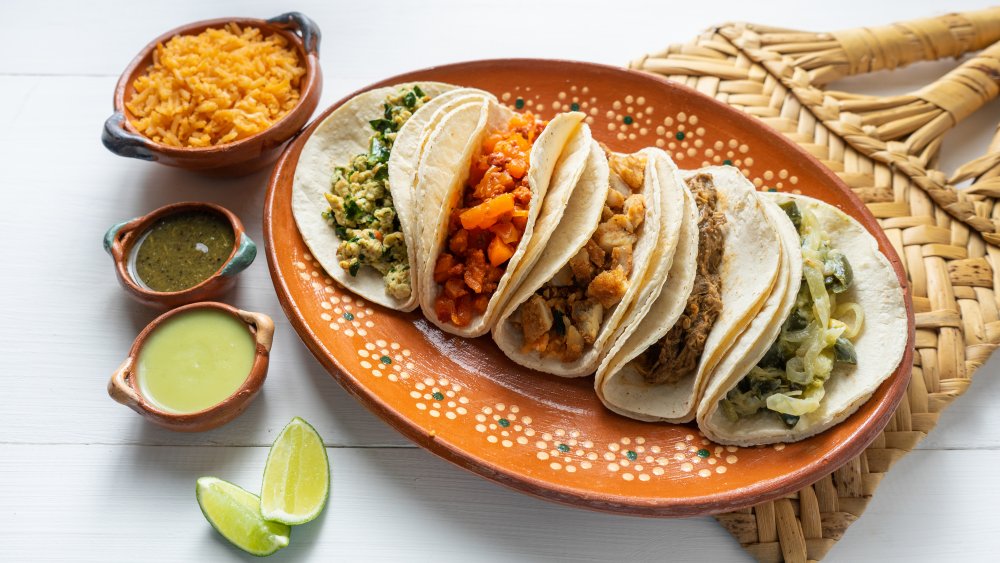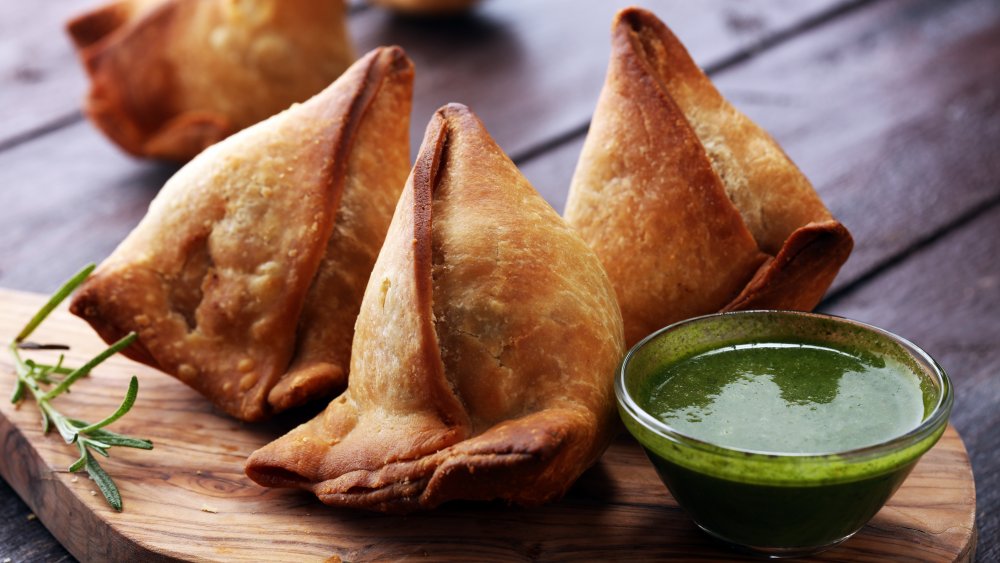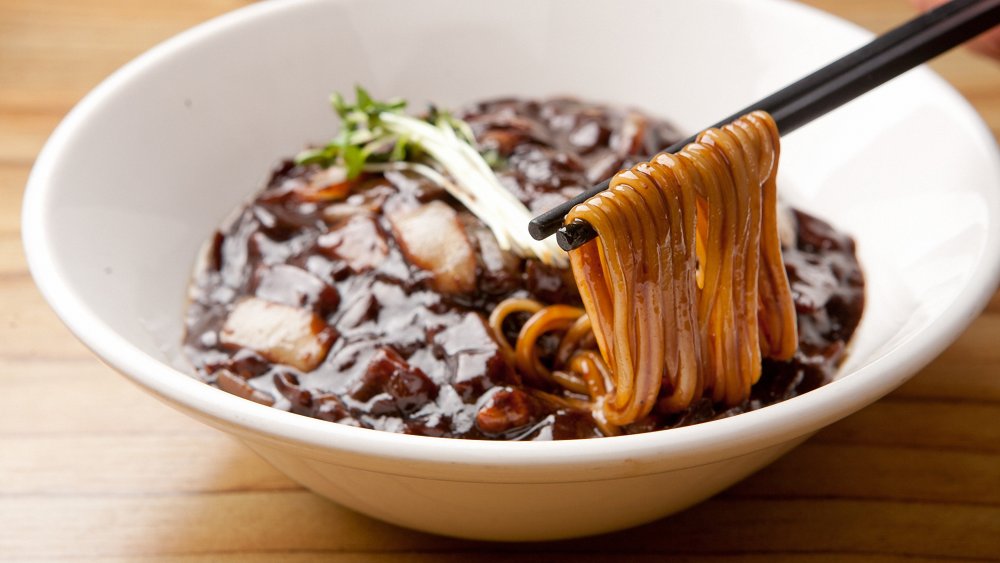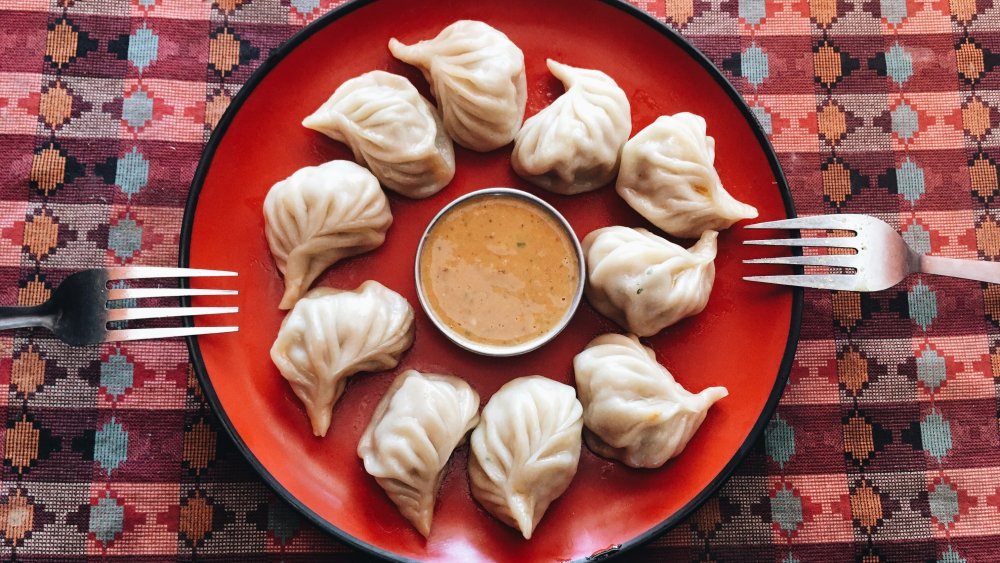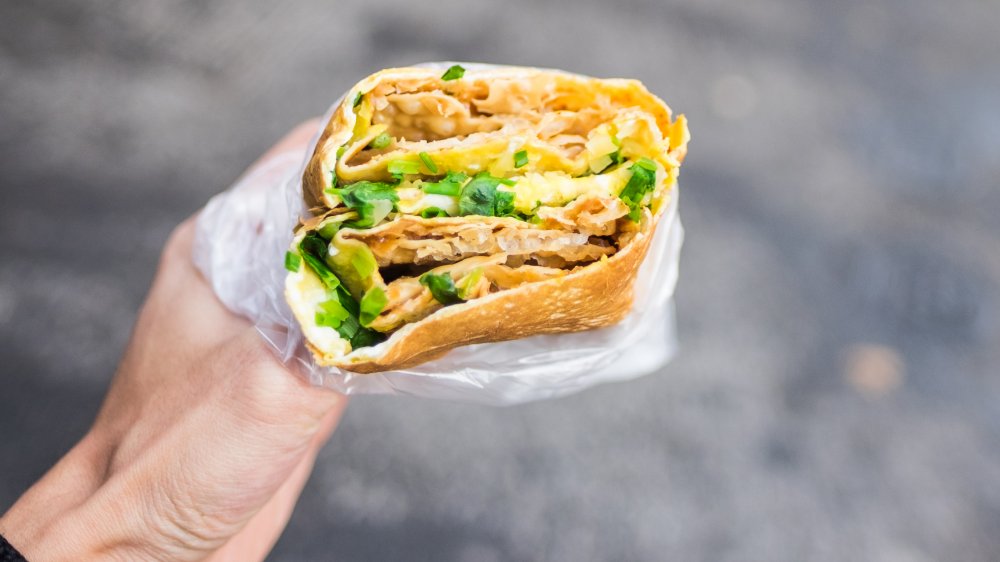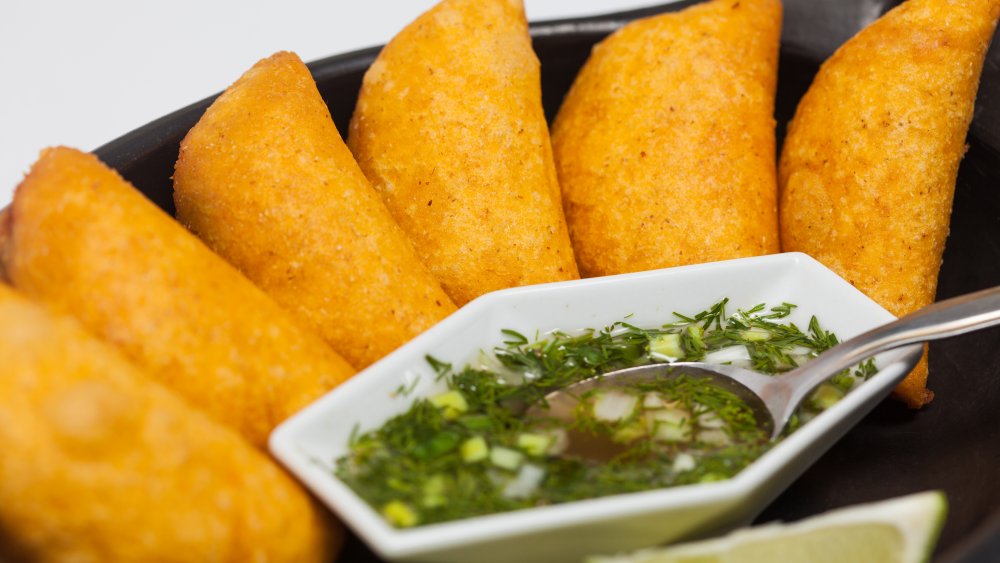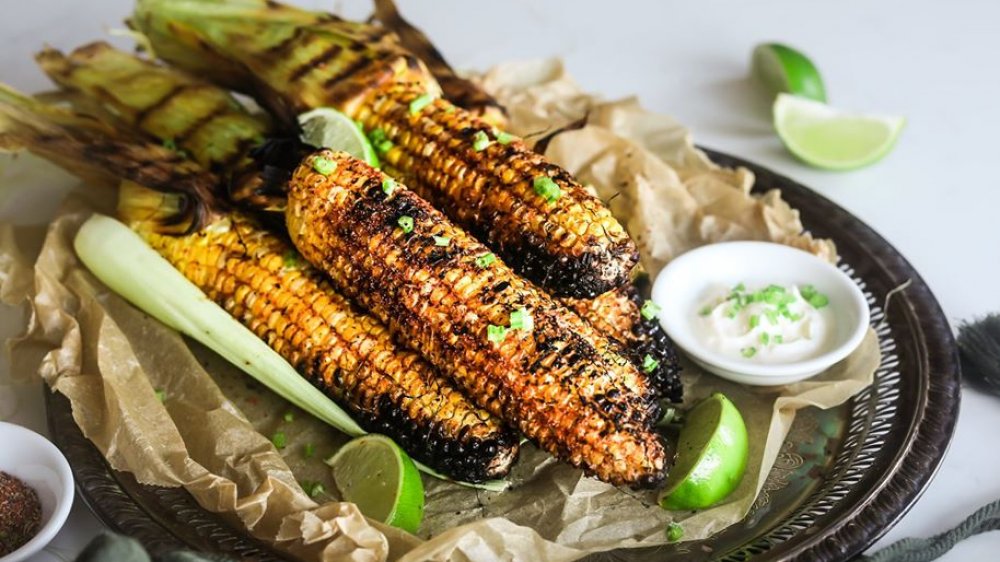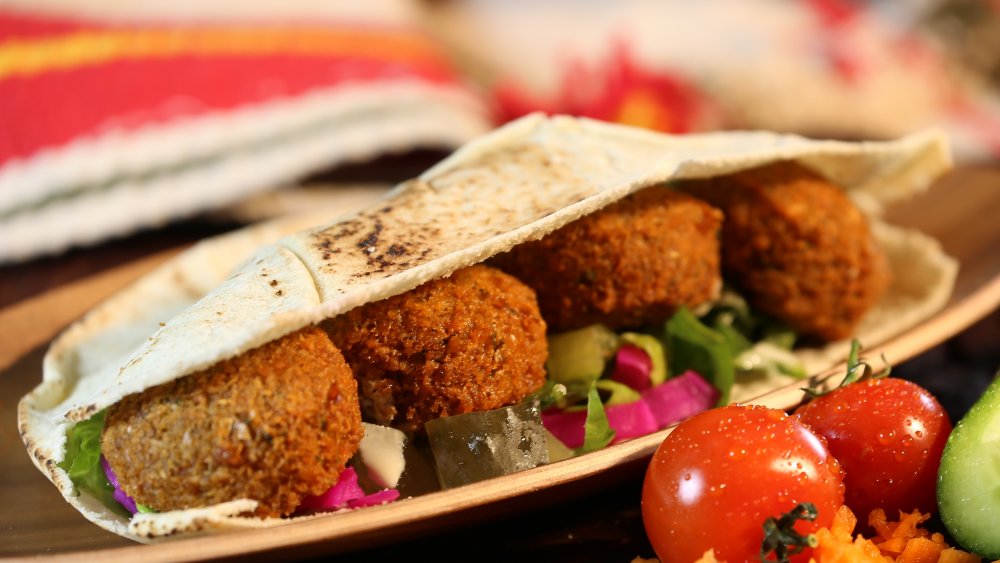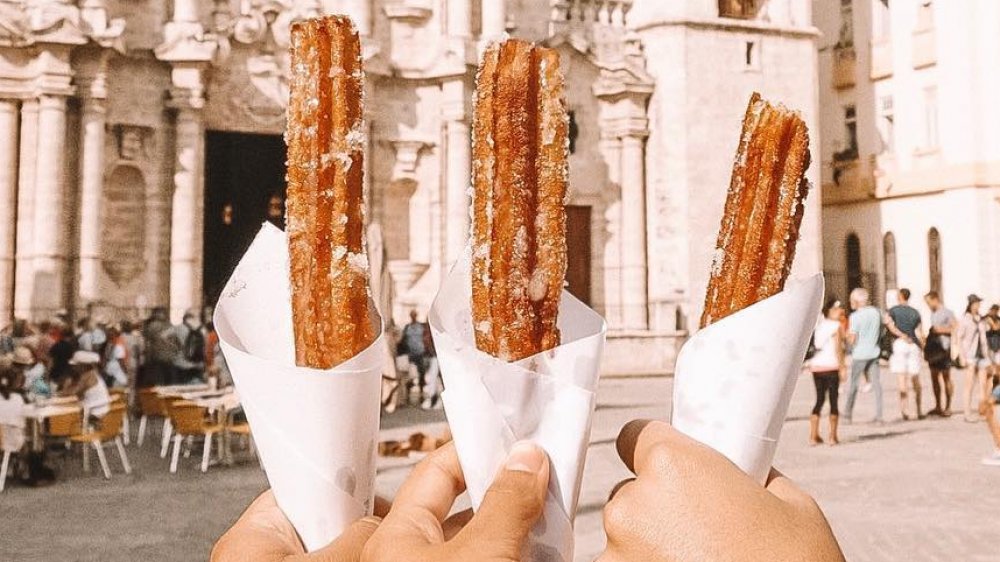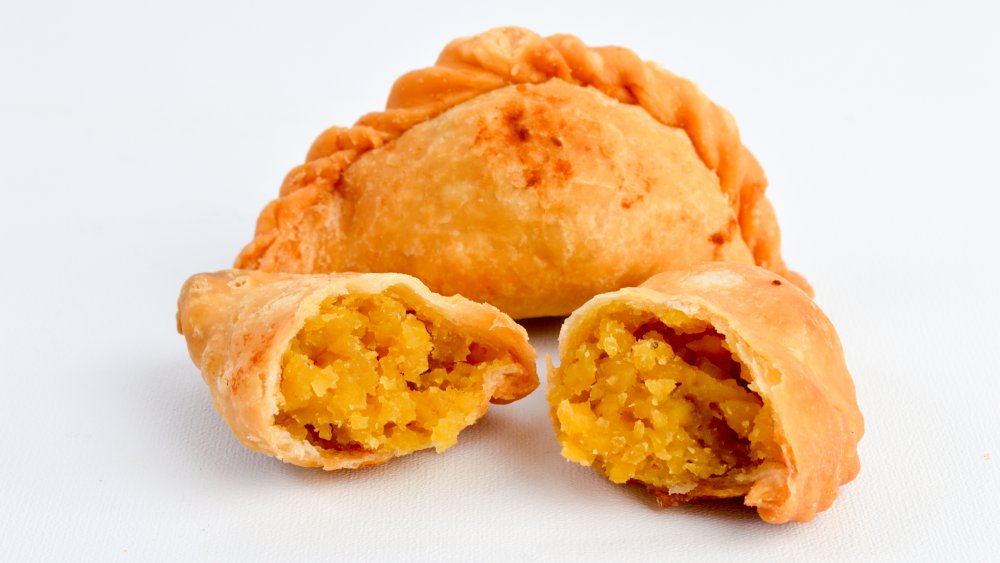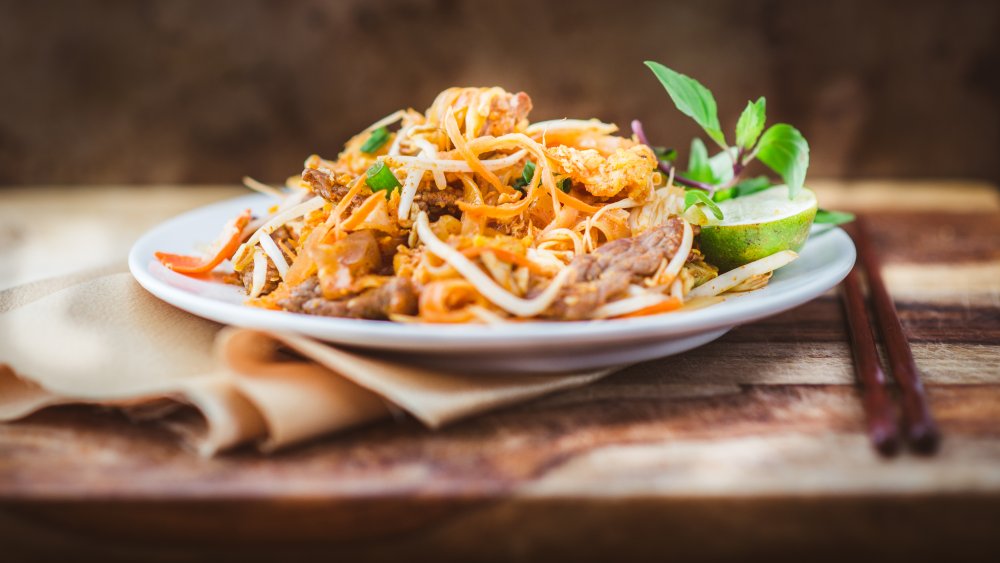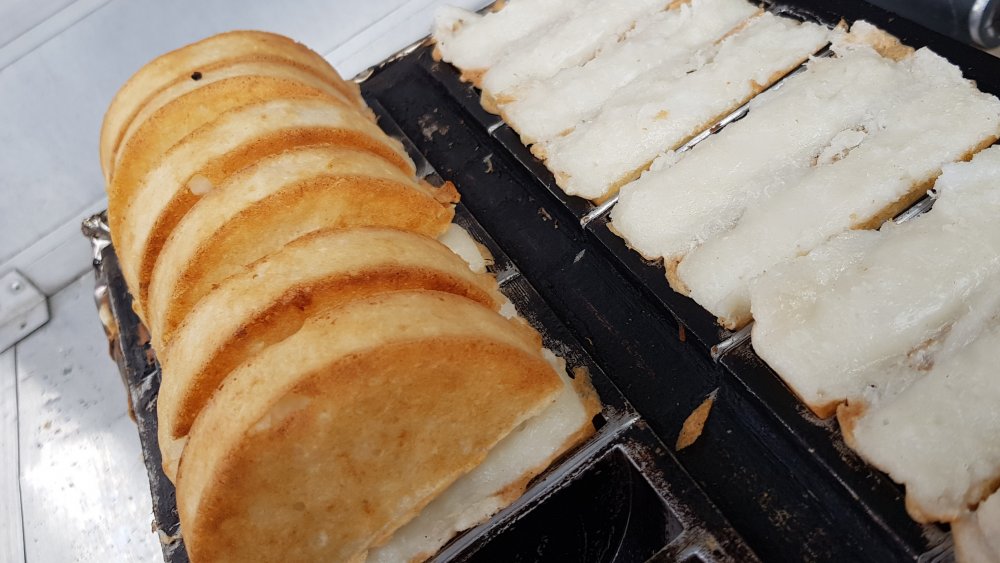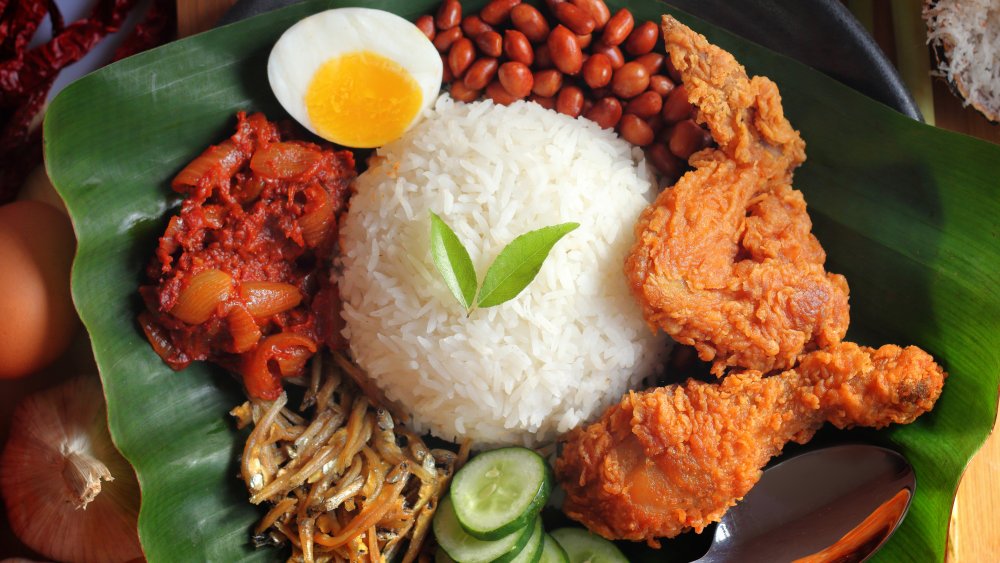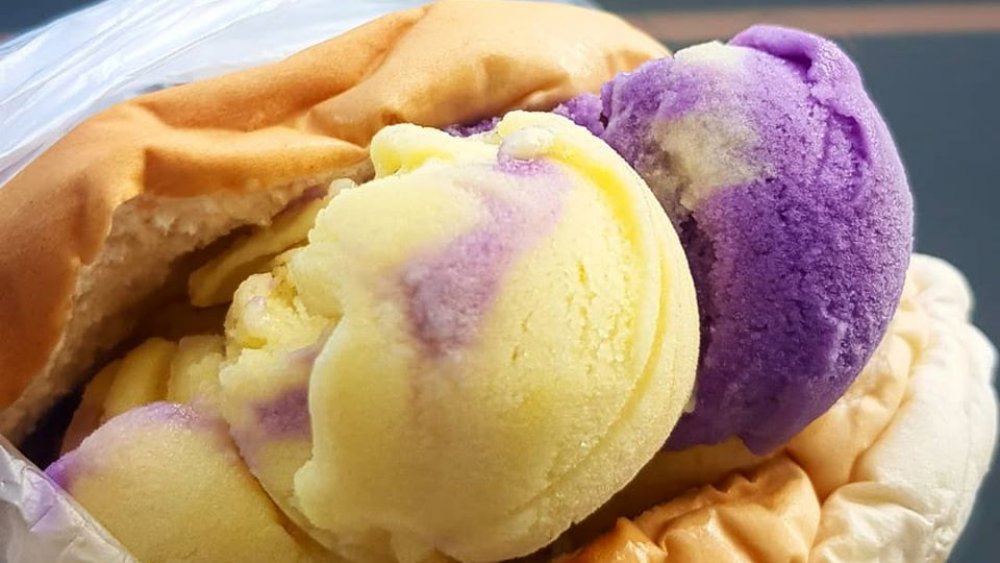The Best Street Foods You Can Buy For $1
The best thing you've ever eaten probably wasn't at a five star restaurant. It probably wasn't even the painstakingly prepared fresh produce you shelled out for at the farmer's market. It was probably off the streets. And it was likely dirt cheap.
According to Incredible Chef Magazine, the origins of street food go back to ancient times. Tiny fried fish were sold on the streets of ancient Greece. Ancient China also had a history of street food, which catered to the poor, but was loved by the wealthy as well. The role of street food has remained the same across history: cheap, filling, and delicious. It might not be the healthiest, but it cures the heart of hardships.
All around the world, street food is a cornerstone of cuisine and culture. It is also an important livelihood that is often passed down from generation to generation, acting as a sort of time capsule of a country's traditions and history. Oftentimes the best way to get to know a new place is to simply step out onto the streets with an empty stomach — and just a dollar in your pocket.
Pizza, USA
Anyone who has done the "20-something broke in New York" trope knows the painful bliss of burning the top of their mouth on a cheap slice. Suspiciously referred to as "plain" instead of cheese and always called a slice — not pizza — 99 cent or $1 pizza is a tasty, filling, and portable meal for busy midtowners and drunk NYU students alike.
New York City arguably has the best pizza in the world. They might not have invented the Italian flatbread with tomato sauce and cheese, but they perfected it. This is not that pizza. This is the cheapest, quickest descendant of that pizza. But it's still tastier than some of the "best" pizza outside of New York. Whether it's 2 p.m. or 2 a.m., a slice is always there for you, its crispy crust and stringy mozzarella blend happy to embrace you from the harsh realities of the big city.
Luroufan (braised pork on rice), Taiwan
If you had to imagine the most decadent and delicious peasant food, it would probably be luroufan. Literally translated as "braised meat rice" this dish consists of a bed of perfectly steamed short-grain rice topped with a hearty, fatty pork stew. To compliment and round out the dish, luroufan is often served with sides, such as pickles, a soy egg, tofu, or stir fried vegetables. Both locals and tourists love this umami bomb of a dish, sometimes as affordable as just $1.
It seems like a simple dish, but the flavors are complex, and subpar luroufan has a hard time surviving long in Taiwan. On the other hand, a good luroufan can support a family shop for generations. The dish also varies from leaner to fattier meats, and can either be on the drier side or more stew-like. The same meat sauce is also sometimes used on noodles.
Spring rolls, Vietnam
Gỏi cuốn, or spring rolls, is one of the most recognizable Vietnamese street foods in the world. Although the fried version is also very popular, the fresh variety in translucent rice paper is the perfect combination of flavors and textures. While you have the cooked pork, shrimp, and rice noodles to provide some bite and chew, the raw veggies and herbs provide a fragrant burst of crunch. Served with peanut sauce, spring rolls are a delicious, filling, and light meal on the go for just 25 cents a piece.
More than likely originating from China, spring rolls were a dish made during the start of the spring season, thus its name and why it features lovely fresh ingredients (via Culture Trip). In Vietnam, they are often made with spring onions and whole shrimp lined up in a perfect row, giving the gỏi cuốn its distinctive orange and green appearance.
Guisados (stew tacos), Mexico
Tacos de guisados are corn tortillas with your choice of stewed fillings. This taco's claim to fame are the hearty, slow-cooked meats combined with various toppings to transform into a dripping and delicious snack by the road. Slow cooking the stews guarantees tender mouthfuls embedded with layers of flavor. Their variety means there's something for everyone. Fillings and toppings include potatoes with chorizo, black beans, guacamole, chicharron, salsa roja, mole, rice, onions in habanero, and countless others. The best part is the build-your-own delicacy costs only 85 cents per taco.
While some street foods are renowned for their compact portability, guisados are proudly wet and dripping, their flavorful interiors unwilling to trade in complexity and aroma for convenience. Found all over Mexico, these soulful guisados are displayed in orange cazuelas and served on plastic plates, sometimes even covered with an additional plastic bag for extra juice protection (via Taste).
Samosa, India
You can't go wrong with the fried, carb-tastic triangular dumplings known as samosas. Samosas are popular around the world, and for good reason. Ranging from about two inches in diameter to the size of a fist, samosa wrappers can be either thin and ultra crispy, or a bit thicker like a pastry crust. Inside, you can find both vegetarian and meat fillings. Popular flavors include potato with peas, or minced lamb.
When purchased on the streets of India, samosas are often made fresh and fried instantly. Vendors can be seen rolling the dough and expertly filling and folding them into their iconic triangle shape. Sometimes the samosas are served with sweet and savory chutneys. The sweet chutney is made of tamarind and dates, and the green chutney is made of mint, cilantro, and chilies. Fast, easy, and ultra portable, street samosas can sell for as little as 86 cents.
Jajangmyeon (black bean noodles), Korea
These hand-pulled wheat noodles are coated with a luxurious black sauce made from pork and fermented black soybean. Sweet and salty, this dish has origins in China, where a dish with a similar sounding name, zhajiangmian, is also eaten today (via Post Magazine). However, these are two distinct and different dishes. The Chinese zhajiangmian is more of a soybean-based minced meat sauce, while jajangmyeon is a silkier, smoother, fermented sauce that's heavier on the black bean flavor and with larger chunks of pork.
This hearty, flavorful dish is often served with pickles or fresh vegetables to balance its intense flavor. Sometimes the dish will include other vegetables such as onions, mushroom, or cabbage stir fried directly into the sauce. Simple, yet delicious, jajangmyeon is a popular and low-priced meal you can grab for around 80 cents from street vendors in Korea.
Momos, Nepal
Momos are delicious Nepalese dumplings that can be either steamed or fried. They have both meat and vegetarian fillings, including buffalo (most traditional), pork, chicken, garlic cheese, and cheese and potato. Chopped onion and tomato are also common ingredients. Sometimes they are served alongside a curry sauce, or a special momo sauce called achar. They come as cheap as just $1 for five. Sometimes they are small, and other times they're huge, but they are always delicious.
Not just a national dish, momos are an important comfort food in Nepal, as well as in Tibet and Bhutan. They have been around for centuries and are an integral part of the food culture (via Slow Food). With the spread of Nepalese migration, the love of momos has followed. They are now a very popular street food across India, and although they look similar to Chinese dumplings or xiaolongbao, momo are distinct in their nepalese spices and ingredients.
Jianbing (savory crepe), China
There are few things in this world as satisfying as the sound and feel of crunching into a freshly made jianbing in the morning. While the exterior is a soft crepe-like wrapping, the fillings are crunchy, aromatic, and a punch of flavor. But almost better than eating a jianbing is watching it being made right in front of you. It's a meal and a show for less than $1.
First a doughy batter is spread onto a circular crepe griddle. Then an egg is cracked and spread onto the surface. This is followed by a few spoonfuls of green onions and mustard greens, followed by various sauces, such as hoisin. The jianbing is then filled with fresh veggies, and the secret to its success — a large, deep fried, rectangular cracker which provides the distinctive texture. The whole thing is then folded into a delicious, portable snack. It can be eaten any time of day, but the jianbing is most popular for breakfast.
Empanadas, Colombia
These delicious pockets of goodness are popular around the world in various wrappings and fillings. They can be found fried, baked, or grilled, and make for a satisfying, cheap, and quick meal. Like with momos and dumplings, the empanada's origin is not clear-cut, but it is widely believed to have originated from Galicia, Spain. Regardless, every country that has adopted the handheld pastry has adapted the recipe to reflect their own culture and history.
In Colombia, the empanadas are wrapped in a cornmeal dough, which gives them a distinctive yellow color. Traditionally, they come filled with either shredded beef, shredded pork, shredded chicken, potatoes, or cheese. Sometimes they are made with ground meat or rice, and they are often served alongside a wedge of lime and a spicy green sauce called ají (via My Colombian Recipes). Not only are empanadas sold on the streets, they are often found outside churches, and are incredibly affordable. According to Reader's Digest, they come at around 17 cents a piece, or about $1 for a plate of six.
Spiced corn on the cob, Pakistan
According to Encyclopedia Britannica, what we recognize as corn has gone through over 10,000 years of human breeding to transform from a grass-like plant to the grain we know and love today. Today, corn on the cob is enjoyed in various styles around the world. In Taiwan it's coated in a thick barbecue sauce and spun on a spit. In Mexico, it's known as elote and covered in mayo, chili, crema, lime, and cheese. In Pakistan, it's called challi, and is one of the most popular street foods, and one that is desperately missed by those living abroad.
Challi is normally cooked by burying the corn in powdered coals and ash, roasting it to perfection, then rubbing on lime and spices, the most important of which are salt and chili powder. Sometimes it's even cooked in sand or directly in salt itself, using a large pan and spatula. However, the corn used in challi isn't the juicy, sweet corn common in the United States, but rather a chewier, meatier, variety. That makes for a savory, filling, and tasty meal for less than 50 cents.
Falafel, Palestine
Falafel is popular around the world as a go-to vegetarian option at Mediterranean and Middle Eastern restaurants. There are often slight variations depending on where it's made, but the Palestinian version is made with chickpeas, parsley, and spices. These fried balls are either spherical, shaped into a disc, or made with an indent in the middle to maximize friable surface area. While falafels are a crispy golden brown on the outside, inside they are a vibrant shade of green. Although they can be eaten alone, as a street food they are often wrapped in pita.
Some of the best falafel in the world can be found in Palestine, for as little as 55 cents for a pita. Using a special falafel scoop, the cook shapes the falafel mixture into even, identical shapes. The pita is then stuffed with the fried falafel, french fries, and a vegetable mixture containing cucumber and tomatoes. The whole thing is then topped with a tahini-based sauce.
Stuffed churro, Cuba
Churros are an internationally beloved choux-based pastry with a crunchy exterior and soft, chewy inside. They come in different shapes, but the general style is as a long, piped pastry with ridges along the sides. While churros originated in Spain, some historians think they might have been inspired by the Chinese "You Tiao" (via HuffPost). Others think it came from hungry, creative shepherds low on ingredients.
Traditionally, Spaniards enjoy churros with a thick chocolate sauce for breakfast. However, churros have become a popular street food in countries like Mexico, Brazil, and Cuba. These are often larger, and covered in sugar or cinnamon sugar.
In Cuba, Churros Locos is the most common churros street stall. They sell foot-long churros that are covered in sugar, then filled with condensed milk. The extra long churros are placed in small cones, which makes them perfect for carrying around town. The best part, they come cheap at just $1.
Curry Puff, Singapore
One of the greatest joys of traveling is discovering a new street food that is not only delicious and cheap, but a perfect representation of a country's long and complex history. This goes for the Singaporean curry puff, a flaky, savory, crave-able hand pie that represents the country's past of colonization and its thriving multicultural background.
Because of the various influences on Singaporean culture, the curry puff's origins have been traced separately to the Portuguese empanada, the Cornish pasty, and the Indian samosa, but it has been found on the Malay peninsula as early as the 1800s. According to Singapore Infopedia, The original Malay version is called epok-epok, and is often made with sardines or potatoes, but no curry. The Chinese then adapted the pastry by adding chicken and egg. The modern curry puff as it is recognized today has been around since the 1920s, and despite Singapore's reputation for extravagant wealth, can still be purchased for just $1.
Pad Thai, Thailand
It's not uncommon for a country's most recognized dish to have origins in street food. However, it is less common that a popular street food was created for the purpose of representing the country itself. This is the case for pad Thai, a tangy and savory rice noodle stir fry dish with egg, meat, peanuts, and bean sprouts.
According to The Atlantic, pad Thai was created with the intent to modernize and westernize Thailand in the 1930s and 1940s. There was an effort to create a unified Thai identity to present to the world, and pad Thai was invented to fill the part of a "national dish." Because rice noodles are cheap and filling, it also provided much needed nutrition during a time of financial struggle. However, ingredients like rice noodles and stir fry are actually more Chinese than Thai, and even in Thailand, the dish is thought of as a Chinese dish, cooked "Thai-style."
Regardless of its purposeful origins, pad Thai was a hit both internationally and with locals. Its affordable ingredients helped it make an easy transition to street food, where it still thrives today. This perfect blend of sweet, salty, sour, and spicy can be purchased freshly cooked for around 85 cents.
Kue pancong (coconut cake), Indonesia
Kue pancong is made on a special griddle that has rows of indented semicircles which allows for the batter to cook in the shape of half-discs. A thick white batter made with shredded coconut, coconut milk, a pinch of salt, and rice flour is then pressed onto the griddle, filling the spaces. The cakes are then steamed with a large lid and brushed with margarine before being topped with sugar and served. While the exterior is lightly grilled by the griddle, the interior is soft and chewy. A dozen of these tasty cakes will cost as cheap as 30 cents.
According to The Jakarta Post, this fragrant Indonesian coconut cake also has various regional names. While in the capital it's called kue pancong, which simply translates to "pancake," in Java it is sometimes called gandos. In Surabaya, it's called ragin cake. It also goes by the names bandros, tratak jaran, and daluman. Regardless of its many aliases, the main ingredients of coconut, coconut milk, and rice flour stay the same.
Nasi Lemak, Malaysia
In the effort to be fast, portable, and affordable, sometimes street food is only temporarily filling, or more of a snack than a meal. This is not the case for nasi lemak, a dish of steamed coconut rice served with various toppings. Nasi lemak is an especially popular lunch dish due to its filling nature and cheap cost of just $1 per plate. It's so beloved it is known as the national dish of Malaysia, but can also be found in Singapore or wherever Malaysian immigrants have settled.
Nasi lemak is made by steaming rice with coconut milk and pandan leaves. Some recipes will call for fragrant addition such as onion, lemon grass, ginger, salt, and sugar. Nasi lemak ayam goreng, or nasi lemak with crispy fried chicken, is especially popular. Chicken legs and thighs are bathed in a curry batter and deep fried. Any extra crispy bits are saved as a topping. Served along nasi lemak is often fried peanuts with anchovies, cucumber, hard boiled eggs, and spicy sambal sauce.
Cheese ice cream, Philippines
When you think of traditional ice cream flavors, cheese is probably last, or more realistically, not on your list. However, in the Philippines, cheese ice cream is a beloved and popular street food that costs only around 40 cents. Known colloquially as "dirty ice cream," this sweet and salty treat is served either in a cone or sometimes even in a sandwich.
The Philippines can get hot — really hot — and like ice cream trucks, dirty ice cream vendors in the Philippines will travel around town, often close to schools where eager children buy the snack to cool down (via Atlas Obscura). The cheese ice cream is actually called keso ice cream, named after the word "queso," or cheese in Spanish. The cheese used is cheddar cheese, and there are often bits of frozen cheese mixed into the sweet ice cream.
